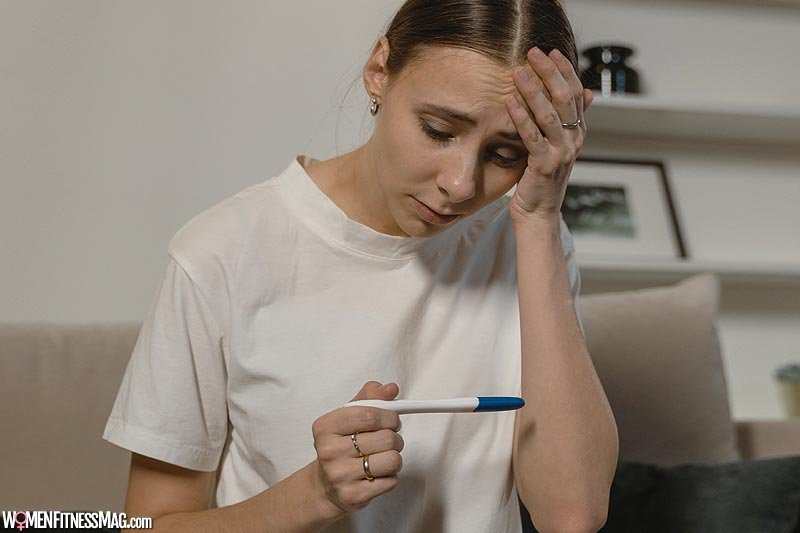Common Tests To Diagnose Female Infertility : Did you know that approximately 8% of currently married women suffered from infertility in India and around 8–12 percent of couples suffer from infertility everywhere in the world? The factors which cause infertility could also be genetic, environmental, infectious or parasitic diseases.
The incidence of infertility among couples are often related to the life-style, stress, postponing parenthood, obesity, genetic or hormonal problems. If you’re trying to get pregnant but aren’t able to conceive, then consult your doctor who can assist you to work out the precise explanation for it and obtain it treated.
In this article, Dr Mohit Saraogi who is a Mumbai based IVF specialist explained the tests for diagnosis of infertility in women which successively can help to decide the treatment options currently available within the country.
Diagnosis Of Infertility In Women
While diagnosing infertility, the primary and therefore the foremost thing an infertility specialist will ask is your clinical history which incorporates earlier pregnancies, miscarriages, menstrual irregularities, or pelvic inflammation. The initial screening usually involves a physical examination, pelvic exam and blood tests to understand about the factors which may affect fertility. The common tests that your infertility specialist may recommend to detect female infertility include:
-
Ovulation Tests
These tests for female infertility include detection of hormones like LH and follicle stimulating hormone. For instance, there’s a surge in LH (LH) before ovulation, which may help to understand if ovulation is proper and thus, help within the diagnosis of infertility. High levels of FSH may indicate ovarian failure or perimenopause, whereas low levels of FSH may signify that the lady has stopped producing the eggs. Also, the detection of the hormone progesterone post ovulation also can signify whether you’re ovulating or not. You might even check ovulation reception with the assistance of an over the counter (OTC) ovulation kit.
-
Anti-Mullerian Hormone (AMH) Test
This is often an easy test that helps to understand the ovarian reserve in a woman. The anti-mullerian is a hormone that is secreted by ovarian follicular cells. The level of this hormone indicates the presence of growing follicles, which acts as an honest indicator of the ovarian reserve or egg supply.
-
Hysterosalpingography
It’s one among the common tests which is employed to look at the fallopian tubes and help within the detection of any blockage or damage of the fallopian tubes. This will help a doctor to understand whether the blockage is restricting the movement of the egg from the ovaries to the uterus, which might be the rationale for not getting pregnant. In this, your infertility specialist might inject a dye into the cervix to fill the uterus which will travel up through the fallopian tubes. The movement of the dye is monitored through X-ray fluoroscopy. If the fallopian tubes are blockage-free, then the dye will come out of the tubes into the greater peritoneal sac. If the flow of the dye through the tubes is blocked or reduced, it might be a symbol of an abnormality within the tubes, which should be further evaluated.
-
Saline sono-hysterogram
This is often a female infertility test during which your doctor will inject sterile saline and air into the cervix to fill the uterus. Once the cavity is full, it becomes easy to watch the inner lining of the uterus with the help of transvaginal ultrasound. It helps to ascertain the fluid movement into the greater peritoneal sac through the fallopian tubes, which indicates that the tubes are open.
-
Laparoscopy
A bit like the hystero-salpingogram, this test also helps to detect any abnormalities within the fallopian tubes. during this test, a little instrument referred to as a laparoscope is inserted into the body through a cut within the abdomen. The instrument helps to look at and examine the feminine reproductive organs. It can help identify conditions like endometriosis, scarring, blockages or irregularities of the fallopian tubes, and problems with the ovaries and uterus which might be the rationale for infertility in women.
-
Vaginal ultrasound
It’s an ultrasound test which helps the doctor to see inside the uterus for abnormalities like scarring, fibroids or polyps. In this, a wand which is inserted into the vagina produces sound waves which provides a clear picture of the reproductive organs including the ovaries and uterus.
Other tests
Depending upon your condition, your doctor may additionally recommend certain other tests to understand the precise explanation for infertility. These include:
-
Hormonal tests
Additionally to hormones like FSH and LH, your doctor might advise to urge your thyroid levels, glucose levels, and pituitary levelchecked.t.
-
Hysteroscopy
Depending on the symptoms you experience, your doctor can recommend hysteroscopy which helps to look at and check abnormalities associated with uterus or cervix..
-
Genetic testing
In rare cases, genetic testing is additionally recommended to see if there’s any genetic disease that would be causing infertility.
Related Videos about Common Tests To Diagnose Female Infertility :
Understanding Infertility Causes and Investigations
Understanding Infertility – Tests
https://www.youtube.com/watch?v=aMNhdQfi_Ew
How Women Are Tested | Infertility
What are the common signs of infertility in women?
Symptoms of Infertility in Females – Endometriosis, PCOS
Common Tests To Diagnose Female Infertility
diagnostic test for female infertility, investigation of female infertility ppt, how to test if a woman is infertile, female infertility treatment, female fertility test at home, investigation of infertility in male and female, fertility blood tests for females, infertility panel test,




